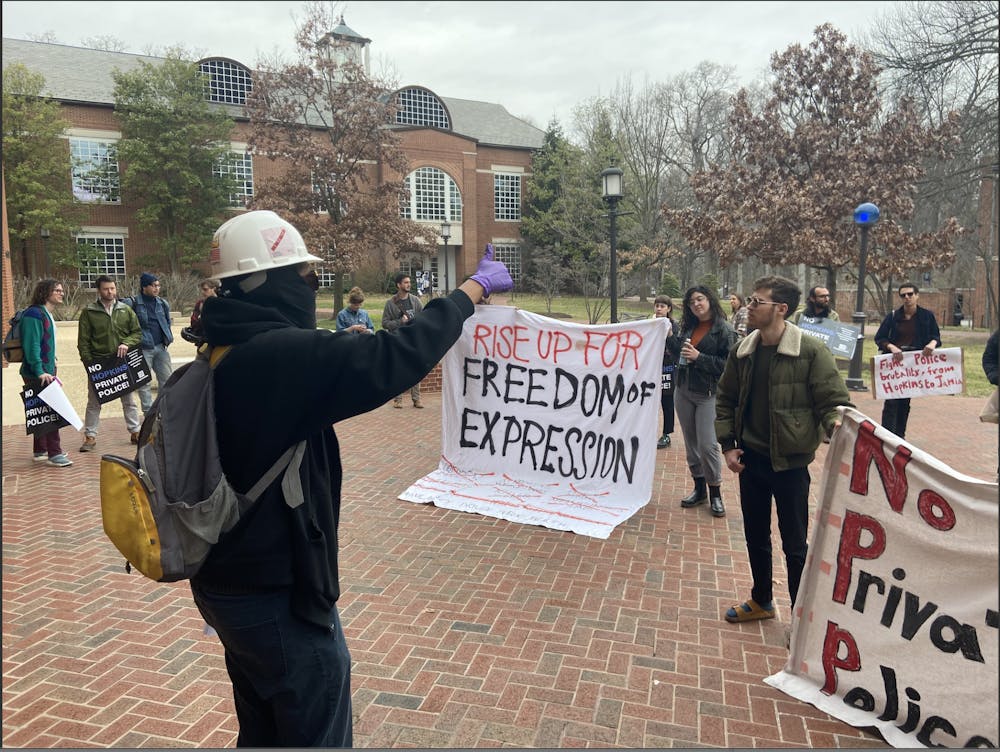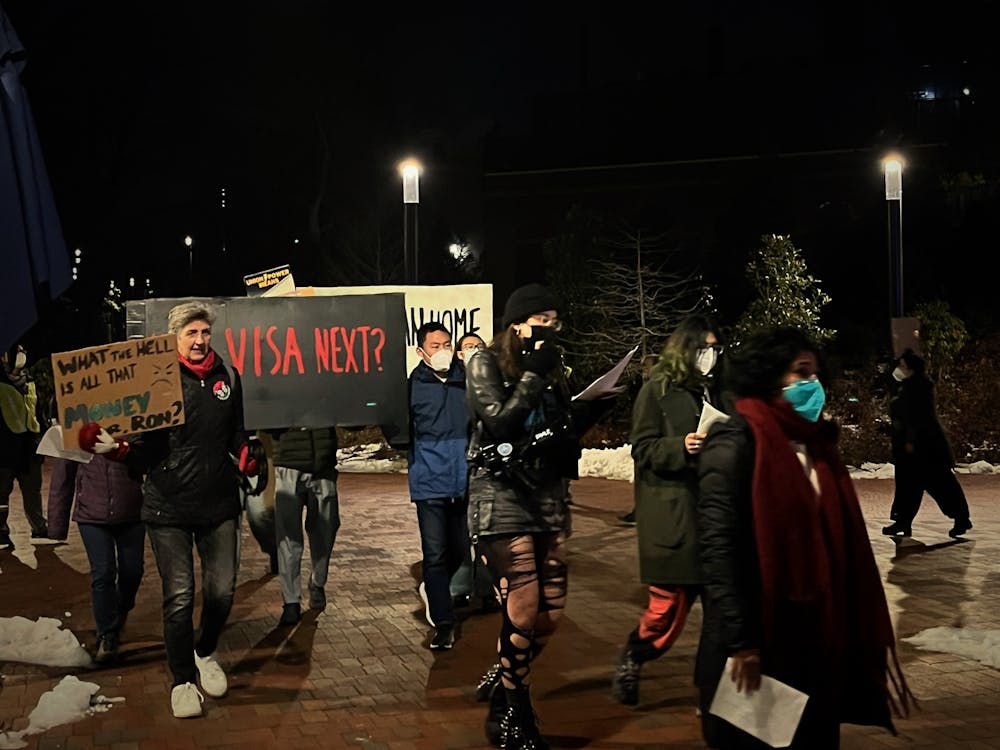Approximately 35 graduate students attempted to deliver a petition, drafted by members of the JHU Sit-in, to the Office of the Board of Trustees in Garland Hall on Wednesday. Among other demands, the petitioners called on the Board of Trustees to pressure University President Ronald J. Daniels to fire Director of Student Conduct Dana Broadnax and issue a moratorium on student conduct proceedings related to protest activity.
Political Science graduate student Sheharyar Imran, who was present at the demonstration, argued in an email to The News-Letter that events at the demonstration captured so much of what is true about the University administration.
“The higher administration’s refusal to meet directly with the protestors outside Garland Hall... demonstrate[d] both the legitimacy of student concerns and how Hopkins fails the communities it purports to serve and the values it claims to uphold,“ he wrote. “The fact that the administration refused to engage as requested reveals once more the university’s anti-democratic commitments to delegitimize dissent and opposition and to suppress student voice.”
According to the petition, the inciting incident for this demonstration was Broadnax’s apparent decision on Feb. 28 to charge four graduate students with student conduct code violations. This came after these students and some others disrupted an on-campus event featuring former Central Intelligence Agency Deputy Director Michael Morell.
The demonstrators argued that Broadnax’s actions were representative of other administrators’ willingness to enact policies that the student body finds controversial and punish resistance. When the demonstrators arrived at Garland Hall, they had anticipated that a representative from the Office of the Board of Trustees would be present to accept their petition. They were told by Associate Dean for Diversity and Inclusion Moses Davis that Vice Provost for Student Affairs Alanna Shanahan was available instead to relay their petition.
Organizer Dee Imah insisted they would not entrust the petition to a member of the administration.
“[Shanahan] saying that she will deliver it for us... just highlights the point that we’re making that administrators do not want us to have a separate, direct line of communication even with the [Board of Trustees] Student Life Committee,” they said. “The point is we want direct communication.”
Shanahan then left. In an email to The News-Letter, Shanahan insisted that her actions were appropriate.
“As the Vice Provost for Student Affairs it is appropriate for me to accept a petition from students,” she wrote.
In an interview with The News-Letter, sociology graduate student Sebastian Link Chaparro expressed the confusion among the demonstrators after Shanahan left.
“We presumed that she was going to talk with the Board of Trustees straight afterward. However, she didn’t send them our message. Once I called to say that there could be a safety issue here if they don’t respond, to de-escalate, [the person who picked up the phone] made it clear, implicitly... that Shanahan didn’t send the message that she said to the student that she was going to channel,” he said.
After continuing to demonstrate in front of Garland Hall for close to an hour and a half, the demonstrators received an email from the Office of the Board of Trustees acknowledging that they had received an electronic copy of the petition. With this notification, demonstrators dispersed.
Anthropology graduate student Mariam Banahi described the frustration that she experienced because she is facing student conduct code violation hearings. Banahi had participated in the month-long protest in Garland Hall this past spring that ended with the arrests of four students and three community members by Baltimore Police Department officers.
She spoke at the rally held in the Mattin Center before the demonstrators marched over to Garland Hall.
“They try to speed up the process so that you have no time to react. No time to give any kind of response. You are face to face with one conduct officer, who you don’t even know the qualifications they do or do not have, to adjudicate what you’ve done,” she said. “These people are not your friends...They’ve shown that they pretend to act like they’re listening and then they screw you.”
In an email to The News-Letter, Broadnax argued that her office’s only interest is in fairness.
“We closely evaluate all matters brought to our attention, and closely follow a consistent process to ensure each student a fair process,“ she wrote.
In an interview with The News-Letter, English graduate student Alex Lewis said that it was this sense of the nature of the University administration that caused him to join the demonstration.
“I was mostly concerned that students were being targeted just for expressing their views in an entirely non-threatening, non-hostile manner. It’s extremely alarming that our university seems to be persecuting students,” he said.
English graduate student Noelle Dubay wrote that she agreed with Lewis’ alarm in an email to The News-Letter.
“The administration’s response to student dissent has been alarming: disrespect, closed channels of communication and unjust disciplinary proceedings,” she wrote.
Ultimately, Imah said that they believed that the demonstration had been a success. They cited the fact that the demonstrators had in the end received a direct response from the Office of the Board of Trustees and not been forced to accept the mediation of University administrators.
“It was a huge success. Campus is shut down. Everyone’s in crisis mode. But we’re keeping the pressure on because the University is operating business as usual,” they said. “But we can find where these people work, we can keep pushing the issue. And that’s not a threat. That’s just the only option they’ve given us at this point.”
Associate Dean for Diversity and Inclusion Moses Davis declined to comment.





